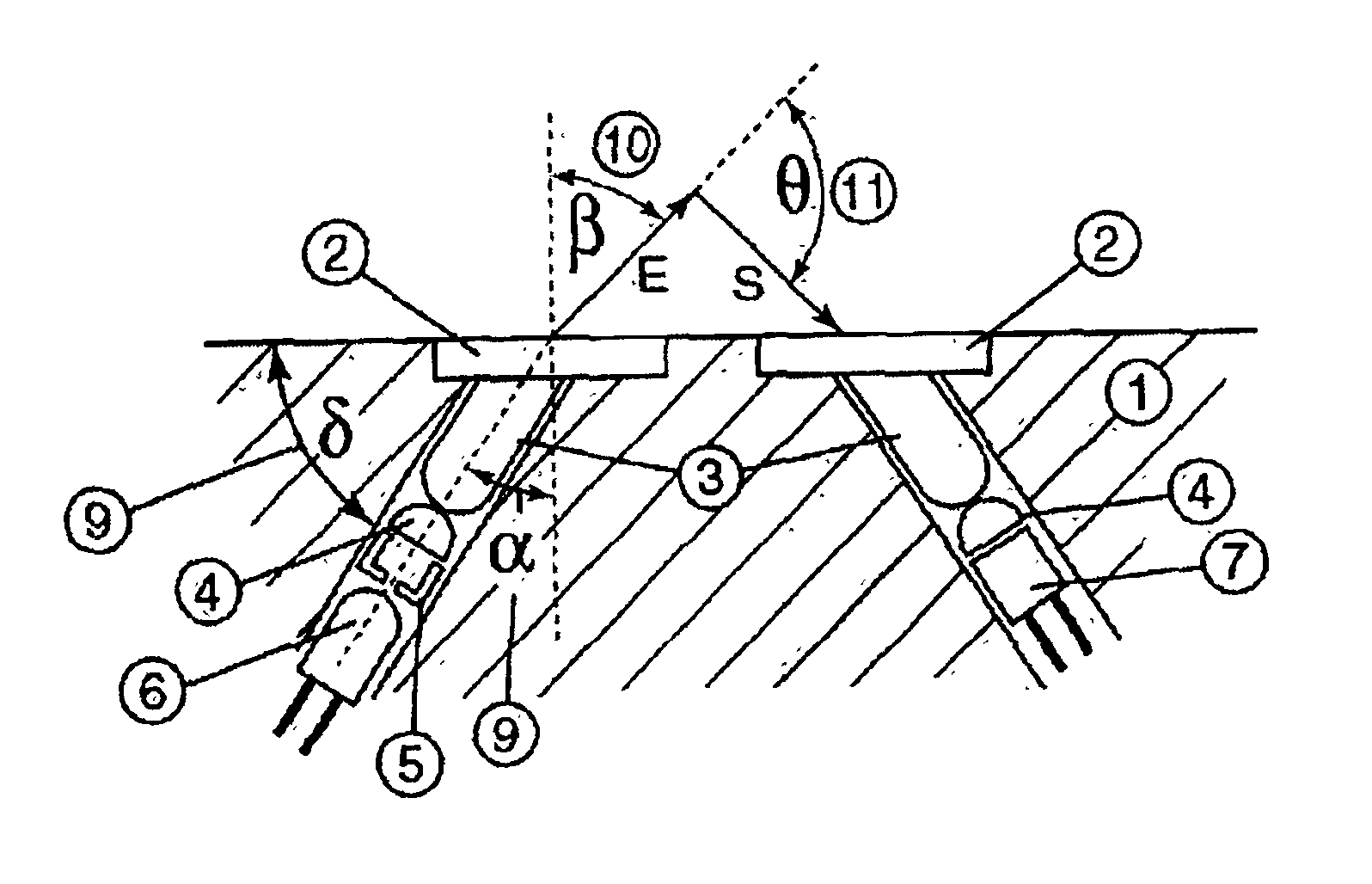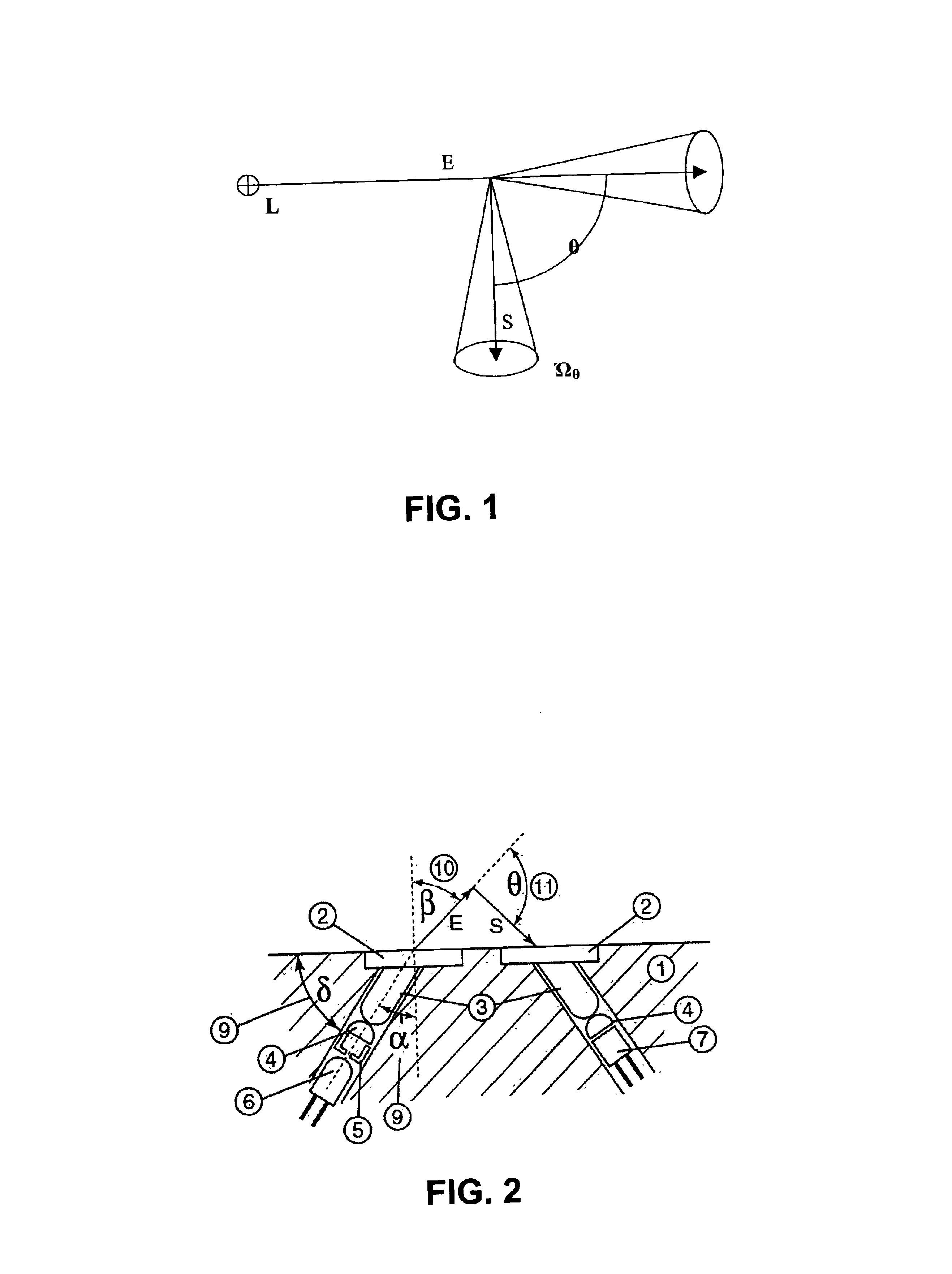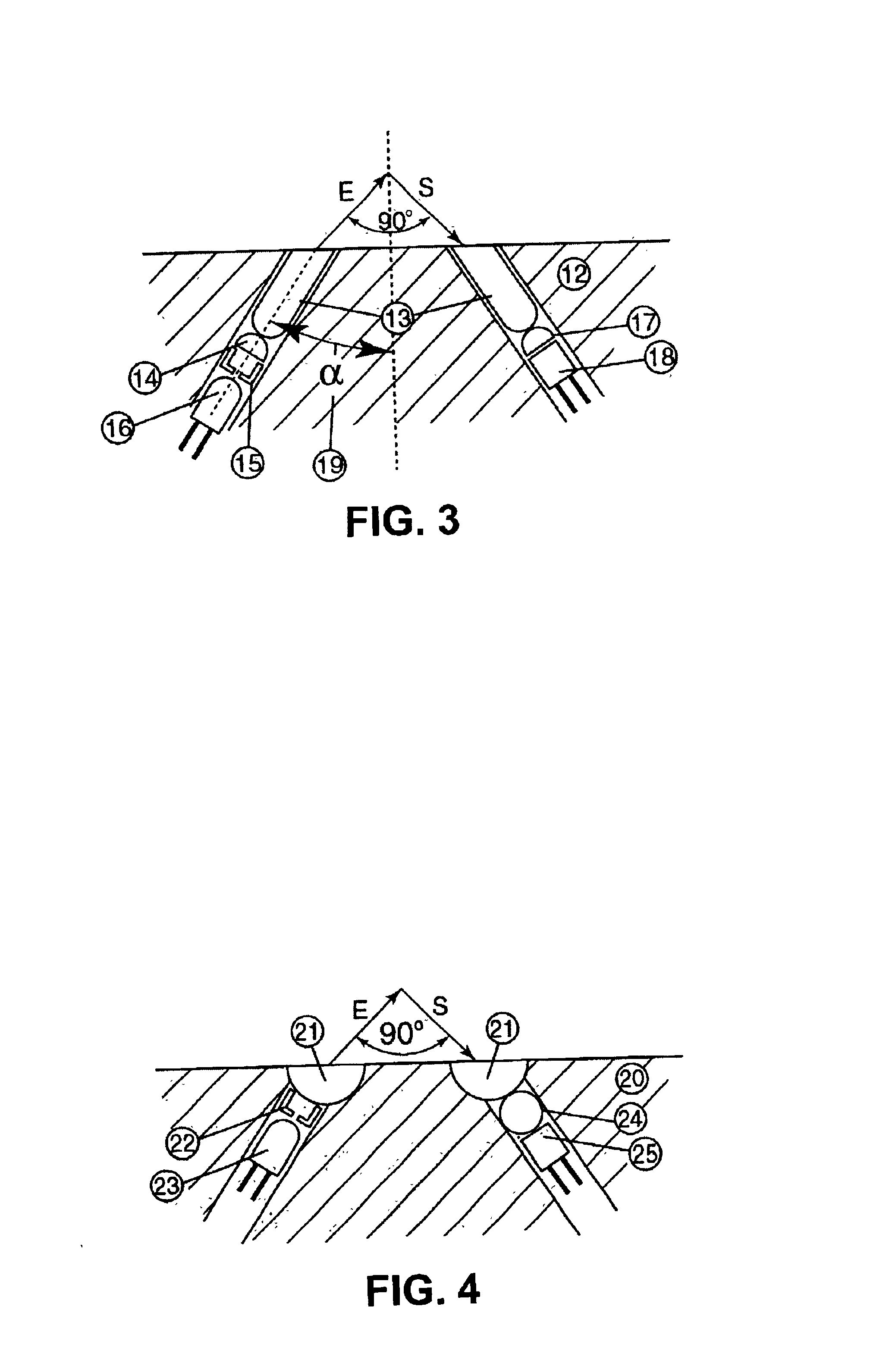Turbidity sensor
a technology of turbidity sensor and sensor body, which is applied in the field of optical methods and apparatus for measuring turbidity of liquids, can solve the problems of not being able to measure turbidity in-situ, measuring low turbidity of natural water of rivers, lakes and reservoirs, etc., and achieves the effects of reducing the size of the sensor body, high sensitivity and small siz
- Summary
- Abstract
- Description
- Claims
- Application Information
AI Technical Summary
Benefits of technology
Problems solved by technology
Method used
Image
Examples
Embodiment Construction
According the ISO 7027, the turbidity should be measured by measuring the scattered radiation at the wavelength 860 nm with bandwidth 60 nm. Referring to the FIG. 1, the optical configuration for the turbidity measurements by measuring diffused radiation (ISO 7027). In FIG. 1, L represents a light source to produce incident radiation with no divergence, E represents the direction of a excitation beam, S represents the direction of a scattered radiation, .theta. represents the measuring angle between the optical axis of the incident radiation and mat of the diffused radiation, and .OMEGA . . . sub.0 represents the aperture angle in the water sample. The light source L produces an infrared beam with no divergence and convergence should be not more than 1.5 degrees. The measuring angle .theta. between the optical axis of the incident radiation and the mat of the diffused radiation should be 90±2.5 degrees. The aperture angle .OMEGA . . . sub.0 in the water sample should be between 20 d...
PUM
 Login to View More
Login to View More Abstract
Description
Claims
Application Information
 Login to View More
Login to View More - R&D
- Intellectual Property
- Life Sciences
- Materials
- Tech Scout
- Unparalleled Data Quality
- Higher Quality Content
- 60% Fewer Hallucinations
Browse by: Latest US Patents, China's latest patents, Technical Efficacy Thesaurus, Application Domain, Technology Topic, Popular Technical Reports.
© 2025 PatSnap. All rights reserved.Legal|Privacy policy|Modern Slavery Act Transparency Statement|Sitemap|About US| Contact US: help@patsnap.com



